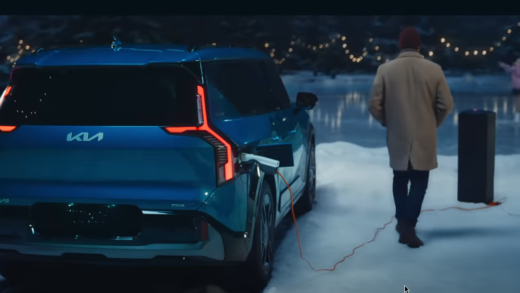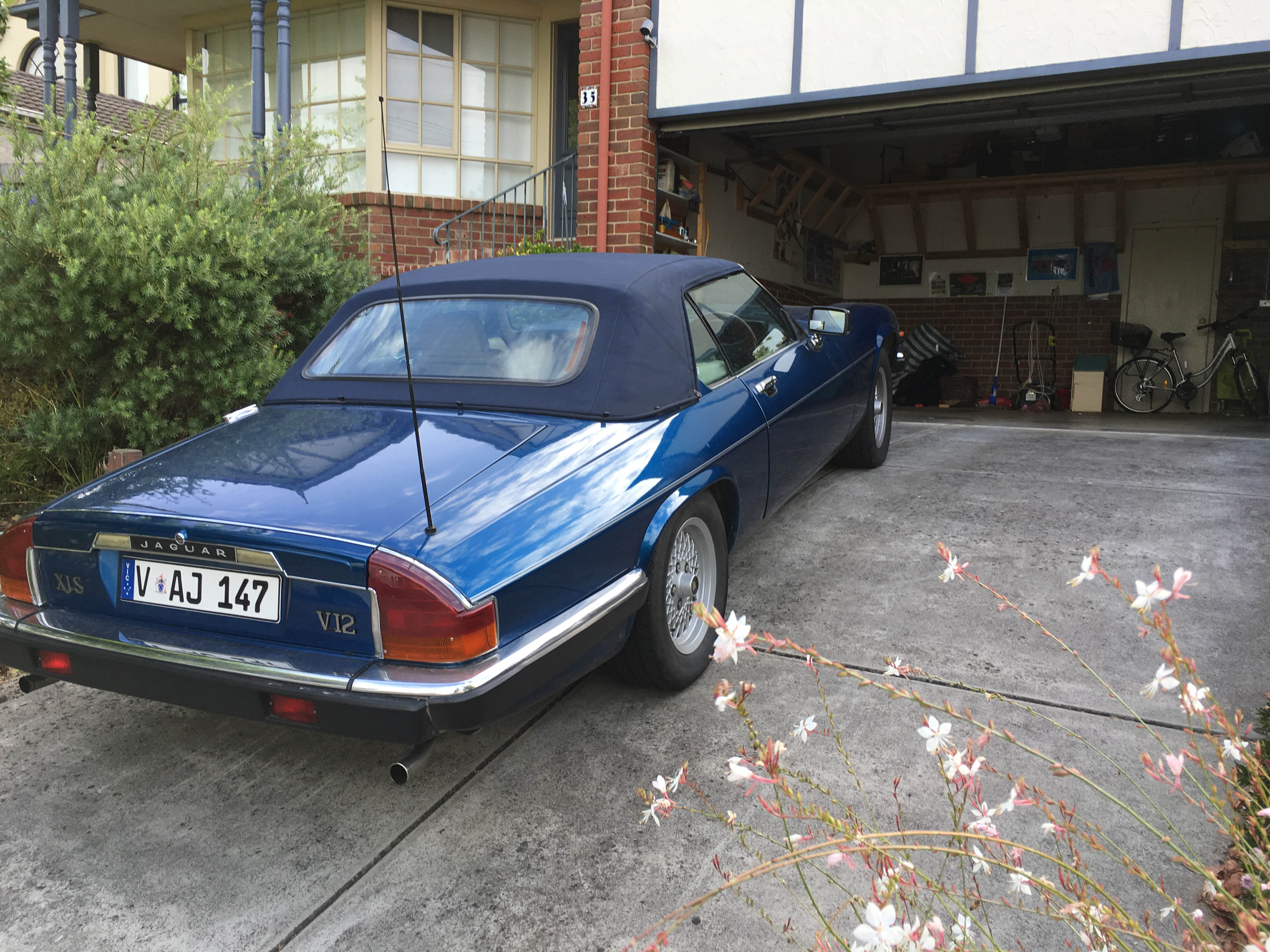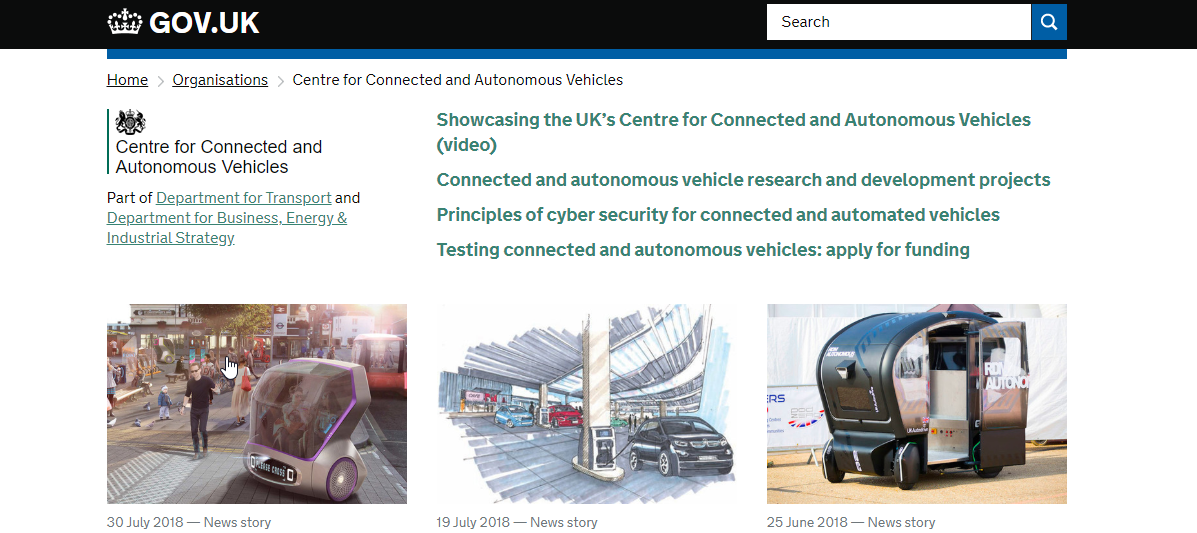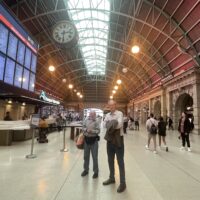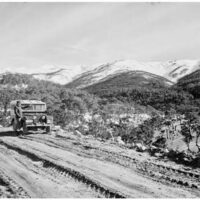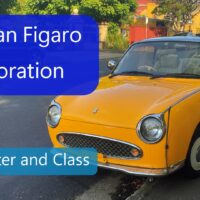An interview of Sam Linke from Jacobs Consulting with David Brown from Driven Media
DB: Sam Linkey graduated in 2010 in civil engineering and the History and Philosophy of Science. She is now the technical leader of transport modelling at the consulting firm Jacobs. She is currently focusing on pedestrian modelling and is also the vice president of the Institute of Transportation Engineers in Australia and New Zealand. She recently traveled overseas on an eye to ITE Australia and New Zealand, Worldwide Learning Opportunities program supported by Austraffic the transport survey company. We had a chat about the experience. Sam thanks very much for your time.
SL: Thank you. Thank you. Very good to share the experience.
DB: So where did you go?
DB: So I traveled over to Toronto for the ITE annual meeting and exhibit in July/August last year.
DB: Now you’re the vice president of the year the ITE in Australia.
SL: So they’re a worldwide professional body and roughly 15,000 people globally largely in North America. And we have a section here in Australia New Zealand headquartered out of Melbourne which I am vice president of.
DB: You joined a while ago?
SL: The ITE? Yes. Yeah. So I throughout my career I’ve been fortunate to spend a little bit of time working overseas and I was in Malaysia for two years from 2013 to 2015 and that was also my transition into the world of transport planning and transport generally and upon my return to Melbourne I joined the team ITE mid 2015.
DB: What was your expectation. Did you see that, what would it do for you did you think?
SL: It’s a good question. I think people affiliate themselves with these institutions and organizations for very different reasons. I came across them, we have a quite active membership here at Jacobs and people who’ve been past presidents or otherwise involved and I attended some events with them and events that were advertised that were of a particular technical interest to me and very quickly I learned that it was a very quick way and in a very effective way to build a network here in Melbourne and for someone who was coming back from overseas that was really attractive initially because I was new into a slightly different sector of transport and I really wanted to make connections and learn from people that I thought that this was a really and effective way to do that.
DB: And give diversity to it’s not just within a very small clique.
SL: Yeah exactly. Obviously I was in a professional environment you’ll encounter clients and colleagues in the little field that you that you work in and you try and contribute in but an organisation like ITE with quite a broad events calendar and quite a broad membership base was definitely a way to challenge the thinking and to make sure that I was learning different things and challenging myself.
DB: So the conference you went to – this was their big a yearly get together?
SL: It is, it is yeah yeah. So it’s a yearly conference that it was combined with the Canadian district’s annual meeting and then the global annual meeting. So there is a sort of annual meeting component of the conference which is around assessing sort of internal matters and the way that we’d like the ITE to run and progress. And then there is a technical component of the conference which was again quite diverse spanning lots of hot topics which are not just sort of North American hot topics but really global hot topics in transport like autonomous vehicles – that are more user centric design and modelling safety and a few other really key topics that we’re talking about here too.
DB: And I think you had some keynote speakers that weren’t necessarily just, if I may say, hard core engineers?
SL: Yeah. So particularly challenging I suppose for a group of transportation engineers and planners and professionals was the closing plenary speaker Brent titre Toderian and who famously uses a the term ‘Plangenieer’ template to try and challenge that we should be engineer to try and challenge that we should be planners and engineers and neither and both. So that was a good perspective to try and help us move, perhaps away from the team engineers and to be more a community of transportation professionals, as diverse as we can make it and we also had a power lunch session from Professor John Leonard who is an MIT specialist in autonomous vehicles and does a lot of work with togo Toyota to the Research Institute. And so also we get a new, a new very very informed but very engaging perspective on autonomous vehicles and perhaps one that was a little bit more pessimistic than optimistic in terms of the timing which was probably pretty refreshing for that audience I think I spent a lot of energy looking forward.
DB: And I’ve spoken to a lot of car companies where they were almost a utopia of what autonomous driving will mean. It’s not that simple?
SL: No no. So I mean we had an hour an hour and a half, so we obviously didn’t have everything but a lot of the examples that that Professor Leonard presented to us were about some of the subtleties of introducing the technology. and the Data they subtleties like how a vehicle will recognise for example a policeman directing traffic as opposed to someone in a blue outfit on the side of the road and waving at a friend. So there were very real and very easily understood I think and relatable. But technically he was able to bring this, sort of, the knowledge that actually these are there is really difficult for us to try and build into the software that be as autonomous as it can be.
DB: There’s also going to be a lot of traffic engineering. The whole notion if we share vehicles where do they stop just those practicalities
SL: Very much so yes. Yeah long curve to come and we spend a bit of time in the conference talking about perhaps the challenges along the midpoints of that curve. So somewhere between now and something that is fully automated and a system wide. So just the sort of caution we need to have as we move to some sort of hybrid or intermediate steps along the way.
DB: Was it a challenge to those who attended the conference those sort of presentations
SL: I think technically – I mean it was an incredibly clever and experienced group of attendees. So I think everyone was technically quite up to the content. Perhaps some of the discussion around thinking like planners and the thinking less like engineers is a little bit confronting for people who have been working in engineering for a very long time. It’s not necessarily new but I think it was – some of the language was and some of the discussion was was deliberately, not controversial but it sort of pointed I suppose to try and prompt people to actually challenge the way that they’d been delivering work previously and think about sort of are we are we making sure that we think about how we do things and that we continue to refresh that thinking rather than do things the same way for a long time.
DB: How we interact with planners has to be very specific in many ways it can’t be warm and fuzzy. It can’t be ‘Oh yes that’s very nice but but really we’ve got to move traffic’. It’s got to be an interaction that produces interactive results.
SL: Yeah yeah. So coming up with very integrated teams, I would have thought, it is a really great way to do that but you’re right if it’s too good to lose then too warm and fuzzy then we probably don’t.. When We sit in the meeting and we might share ideas and that all sounds very nice and then we’ll just go our separate ways and continue to learn to do things the way we always have (lauhgs). So yes better integration and real integration with sort of enough framework around it that things get done is really important.
DB: And so the two years of ITE is reviewing where it’s at and how it goes about things. Did you get some ideas from that.
SL: Yeah very much so. It’s a very lively discussion so we’ve recently voted to change the some key elements of our Constitution globally and they are our now moving in that direction of being more inclusive and less around a formal definition of transportation engineers and more around transportation professionals. And with that change naturally comes some nervousness around whether loosening the definition of what is quite an esteemed organisation and that people hold very dearly as their professional affiliation may lose its meaning if it becomes too broad. So I think they were very healthy discussions. But ultimately after the meeting the proposed amendments which were to essentially change some key terms, away for transport engineers and about transportation professionals, in terms of defining who our members can be, were ultimately voted in. And they’ve now been implemented so that we’re very much moving in the right in the right direction I think. But it is important that we don’t do that too quickly and that we listen to the people who are nervous about that transition and we make sure that we protect the things that we need to to move forward with the right technical rigour.
DB: Do you think people are nervous because they feel that the acquired wisdom may be lost rather than incorporated. That it has to be integrated is that a word they were particularly focused on?
SL: Y es I think that’s a good summary. I suppose there’s nervousness that perhaps the technical disciplinary, rigour and knowledge gets diluted. And I think engineering is quite traditionally a very, a very structured and very logical discipline and and the way that we define ourselves as engineers is quite formal and people don’t want to lose that because rightly so people are very proud of the engineering world and discipline and process. So I think, yes, making sure that things are integrated and probably balanced is important too.
DB: Well it’s also a critical opportunity to make sure you are integrating with people who will have a big impact on the solution. The other issue is is there a concern in ITE to you that governments and that are de-skilling a bit. T hat that they’re not keeping that wisdom going?
SL: That’s a good question. I suppose it would be very diverse depending on the sort of the background or the actual location of people that are coming together so that I wouldn’t say that that was a an emerging theme of the conference but it is certainly something we need to think about and in Brent Tartarin Toderian’s speech she did very much talk about the challenges in engaging. He has with his worked all around the globe and so at times differently sort of skilled and differently backgrounded sort of government side clients. So it was certainly discussed probably not a key thing.
DB: I heard him talk one time where someone became some what ‘Us and them-ish” as and here’s an email and were condemning even engineers and his point was ‘no no no that’s not the role’. It’s a respect. There’s a respect there. It’s just it’s making sure we cover as much as possible?
SL: Yeah yeah I would I would say the same was probably true of the closing Flanery plenary in that I think the speech is deliberately provocative because it’s about trying to energize people. And so some people take some time to process that and perhaps some of that provocation is not always receives depending on your personal style, the best way. So it definitely needs to not be ‘us and them’ and I think I think that is Brent’s key message. But sometimes the provocation maybe you put people off a little bit.
DB: But your point is it must take time. We we’re not going to resolve it overnight.
SL: I think so and I suppose that that’s true. We can see that in the ITE journey which is you know we’ve been talking for a long time about about becoming a community of transportation professionals and that that has to move with the time that it takes to get people on board and understanding and and appreciative of the value of doing that rather than rushing out and sort of changing our Constitution changing our name in a way and hoping people catch up.
DB: I love the notion of purely judging people on their contribution and their input. It would have been a lot of men there.
SL: Yeah. (laughs) It was, particularly in the plenary session looking around a very big room. They were predominately men and most people probably older than myself and that’s probably indicative of the transport industry generally. But I was really pleased that the conference program and the conference attendees I think is increasing in terms of its representation of younger people and of female professionals and there were actually some key sessions that were targeted at around those topics which was really, really pleasing and we had some really open, I think, constructive and productive discussion around those topics which was not just women sitting around sort of talking about it but attended by all people from the conference men and all ages.
DB: I hope we get to the stage where it is irrelevant what are your gender or your age happoens to be.
SL: Yeah absolutely. And so I think that was that was a nice theme running through the conference of acknowledgement that we would like to get to that point and wanted to try to specifically discuss and share some of the challenges specific to transport industry and to try and share how we might work through those and to just acknowledge and spend some time discussing them I think is really valuable.
DB: You will report back to you ITE here in here in Australia?
SL: Yeah yeah I’ve drafted a sort of a summary nonage which picks up. It was really difficult to say it was shorter than five pages and I tried to get it to one page but there was just so much I want to capture. So I sort of initially put down on paper some thoughts and some findings and tried to report back on the key themes that I really went to try and pick up on which were young professionals, women in transport, and connecting generally with ITE globally. A lot of those prompted suggestions, potential actions for us, potential ideas programs topics that we could try and cover. So the next step is to try and work out a plan to implement those and to keep them live.
DB: Can You do a lot of modeling of pedestrians Susan just origin destination. Has it become more complex than that?
SL: Yeah it’s a pretty complex topic and that’s probably why I found the moves. My background was in civil engineering and highway design and then I mention I spent some time overseas and that was a move into transport planning and specifically pedestrian planning and modelling and perhaps what I found so attractive about that space was the complexity and the ambiguity and unknown around the behavioural side of people movement and being able to sort of bring an engineering discipline and a modelling discipline and also some behavioural thinking and trying to to sort of be comfortable with the unknown. So it is very much about thinking about preference and options and ranges and uncertainty which is a really durable enjoyable space to work in.
Highway design often assume you have road and cars going in that direction, whereas of course now oh there’s a whole approach that of pedestrians as to why they work walk and how they walk as well as perhaps there is still the engineering thing of efficiencies of getting to go in a manner that is efficient?
SL: Yeah it’s a real it’s a real balance. So sometimes I’ve done some work in sporting event contexts and that’s an interesting balance of actually trying to perhaps reduce efficiency in some spaces because if everybody exits the stadium and they all want to go to the station at the same time and they all get there at the same time then that’s too much stress for some infrastructure that is not necessarily designed to cope with that pulse of activities. Sometimes the modelling and the design aspects are around ‘how do we actually slow these people down and help them engage with the place that they’re in’ so that we get a better infrastructure utilisation and we get a better and better experience outcome for those people and we also offer a better place making outcome.
DB: Play smoking Place management is becoming a very big issue.
SL: It is yeah.
DB: How does that reflect in your work
SL: Yeah. I suppose it is around the concept of attractive things to engage in that are attractive to people moving through spaces that help them stop and slow and and and be part of a place. And so the sporting context is a good one, so that might be around sort of entertainment after a sporting event you know food and beverage all sorts of things that just are not sort of tokenistic but meaningful and that help people stay and and engage and sort of slow. A lot of the, as part of travelling over to Canada and into a few different cities before and after, and was really interested to see in, I suppose comparing a city like New York where there’s lots to engage with on the street and then actually a lot of effort to sort of make those streets ‘stickier’ and to help keep people there and engaged and present in the good weather where I was there and Banff I also went to you afterwards and that’s a city that is trialling things like giving up car spaces to block off public seating and outdoor sort of terraces to help keep people on these streets rather than walking through them and initially local businesses in Banff in the trial area were quite nervous. I understand about ‘oh we’re gonna lose our car spaces and what do you do if people can’t park outside my cafe’ and actually they’ve seen that sort of patronage and their turnover is much higher because people are recognising that these are places where they can stop and wait and engage and be part of the street and the trial’s been very successful.
SL: In fact if you encourage bicycling riding you’ll get more hungry and thirsty road riding a bike .
SL: Good points. Yes yes (laughs) very much so especially was one of those slow slow sort of city bikes or otherwise where you’ve really got to push hard.
DB: Which is part of an understanding of the humanity of a lot of that sort of action rather than just a flow of vehicles or people down the corridor.
It’s a really great example of the need to be integrated in the way that we’re planning and to challenge the way that we designed to make sure we think about how people are feeling and what their options are and what they might want to do on a particular day.
DB: Thank you very much for your time.
SL: Thank you.
That was Sam Linke the technical leader of transport modelling at the consulting firm Jacobs who recently traveled overseas on an ITE Australia and New Zealand worldwide learning opportunities program supported by Austraffic Pty Ltd.

